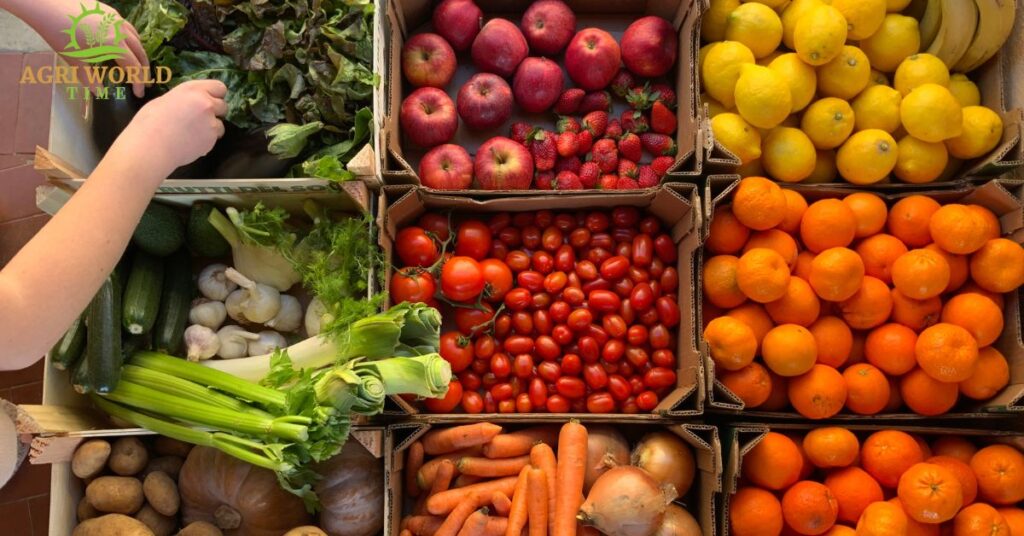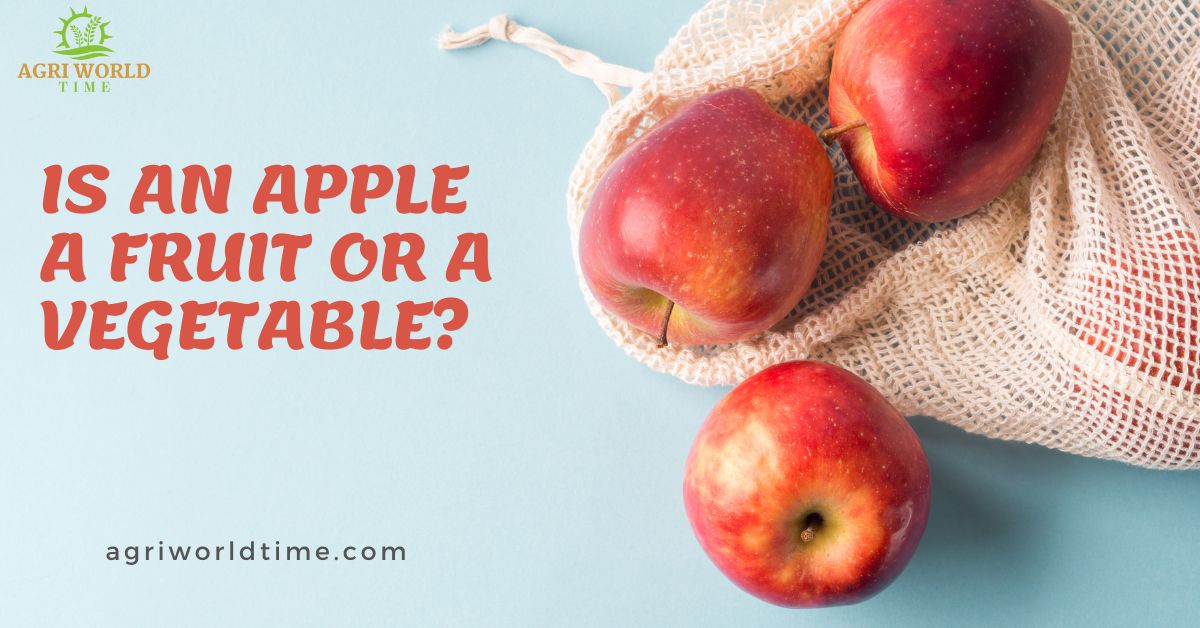Welcome, curious readers, to a journey of discovery. We explore the world of one of nature’s most beloved and versatile fruits – the apple. This delightful fruit has graced our tables and tantalized our taste buds for centuries, whether crisp, juicy, or baked into a delectable pie. But have you ever wondered if an apple is a fruit or a vegetable?
This blog aims to peel back the confusion surrounding the apple’s classification. We’ll delve into both scientific and cultural perspectives. While we often associate apples with sweetness and orchards, there is more to this humble fruit than meets the eye. Some culinary enthusiasts argue that it can also fit the profile of a vegetable, playing a role in savory dishes that stretch beyond the dessert realm.
Let’s dive in and bite into this fascinating edible enigma’s sweet and savory intricacies!
Understanding the Distinction: What Defines a Fruit?
Before we delve further into the enigmatic nature of the apple, it is crucial to establish a clear understanding of the terms “fruit” and “vegetable.” The distinction between these two food categories often seems straightforward, but the reality is far more complex.
Botanically speaking, a fruit is the mature ovary of a flowering plant, typically containing seeds. Fruits develop from flowers, and their primary purpose is to protect and disperse seeds. It ensures the survival and propagation of the plant species. In this context, apples undeniably fit the criteria of fruit as they develop from the fertilized ovaries of apple blossoms, enclosing seeds within their core.
The Vegetable Puzzle: Classifying Nature’s Edible Wonders
On the other hand, the term “vegetable” lacks a precise botanical definition. Unlike fruits, vegetables encompass a broader range of edible plant parts that do not necessarily originate from flowers or contain seeds. Roots stems, leaves, and even certain flower parts can all be considered vegetables in a culinary context.
However, the line between fruits and vegetables often blurs. It leads to confusion and debates over classifying certain plant products like apples. So the question is, can an apple also fit the definition of a vegetable in specific culinary applications? This intriguing puzzle sets the stage for a deeper examination of the apple’s botanical background and potential dual identity.
The Apple’s Botanical Background
The apple is scientifically known as Malus domestica. It traces its roots back to the temperate regions of Central Asia. Wild apples are believed to be the ancestors of the cultivated varieties we enjoy today. They were discovered growing in the rugged mountains and valleys of Kazakhstan, Tajikistan, and China.
Over thousands of years, humans played a pivotal role in the cultivation and domestication of apples. Through selective breeding and cultivation practices, the once small, bitter, and inedible fruits transformed into the sweet and succulent delights we recognize today. The apple’s journey from its wild origins to the orchards across the globe offers intriguing insights into its botanical background.
The Case for the Apple as a Fruit
One bite of a ripe, juicy apple is enough to evoke a sense of delight and nostalgia. The natural sweetness, combined with its refreshing crunch, makes apples a favorite among people of all ages. Whether enjoyed as a simple snack, incorporated into desserts, or transformed into apple-based products like juices and cider. The apple’s taste profile undeniably aligns with the quintessential characteristics of the fruit.
Seeds of Truth: Unveiling Apple’s True Identity as a Fruit
The journey to unravel the mystery of the apple’s true identity as a fruit leads us to explore its reproductive purpose. Hidden within the core of the apple lie seeds, nature’s ingenious mechanism to ensure the continuation of the species. Through the lens of botany, the presence of seeds solidifies the apple’s status as a fruit.
The Case for the Apple as a Vegetable
The apple’s association with sweet treats is undeniable. On the other hand, it also exhibits remarkable versatility in savory culinary endeavors. Chefs and home cooks have embraced the apple as an essential ingredient in various savory dishes. From hearty salads and savory pies to savory sauces and chutneys, the apple’s unique flavor profile and textural qualities add a delightful twist to traditional recipes.
The apple’s subtle sweetness and acidity can balance out savory flavors. It creates a harmonious and complex taste experience. Its firmness also allows it to adapt well to various cooking methods.
Apple varieties like Granny Smith and Braeburn are favored for their tartness and ability to lend themselves to savory applications. As we explore the savory side of the apple, it becomes evident that this fruit’s culinary contributions extend beyond the dessert domain, making a compelling case for its classification as a vegetable.

Apple’s Secret Identity: A Vegetable in Disguise?
Intriguingly, classifying apples as vegetables is only partially with historical precedence. Centuries ago, when culinary categorization was less rigid, many fruits and vegetables were grouped. It was based on their taste and culinary usage rather than their botanical origins. In some cultures, apples were perceived and treated as vegetables, used alongside traditional vegetables in various savory dishes.
The apple’s dual identity as a sweet fruit and a savory vegetable continues to challenge our perceptions. It prompts us to question whether our categorization of fruits and vegetables is solely dictated by scientific botany or influenced by cultural and culinary traditions.
A Historical Perspective
The apple’s historical journey through time involves cultivation, cultivation, and dissemination. As discussed above, its origins are in the rugged mountains of Central Asia. Apples traveled along the Silk Road and ancient trade routes, finding their way into different civilizations and cultures.
Apples on Our Plates: A Vegetable in the Past?
Delving into historical cookbooks and culinary traditions, we uncover intriguing instances of apples being treated as vegetables. In some ancient recipes, apples were combined with savory ingredients, blurring the lines between fruit and vegetable in the kitchen.
In medieval European cuisine, apples featured prominently in savory pies and stews alongside meat and other vegetables. Historical references to apple-based sauces and accompaniments for savory dishes further highlight the multifaceted role that apples played in the culinary repertoire of the past.
Apples in Myth and Legend: A Fruitful Symbol
Beyond its culinary contributions, the apple has left an indelible mark on human culture, appearing worldwide in myths, legends, and folklore. The apple has been associated with various symbolic meanings throughout different civilizations and time periods. It often reflects themes of love, beauty, and temptation.
In Greek mythology, the golden apple played a pivotal role in the story of the Trojan War. Eris, the goddess of strife, tossed a golden apple inscribed “for the fairest” among the goddesses, sparking a rivalry that led to the eventual Trojan War. This apple of discord highlights the fruit’s connection to beauty and vanity.
In Norse mythology, apples were considered a source of eternal youth and beauty. The goddess Idun was the keeper of the golden apples that granted immortality to the gods, keeping them forever youthful and vibrant.
In various cultures, giving or receiving apples has been associated with expressions of love and affection. The phrase “apple of my eye” still endures as a term of endearment in some languages, symbolizing something or someone cherished above all else.
Scientific Insights
Unlocking Nature’s Mystery: How Botany Determines Apple’s Identity
While cultural symbolism and historical usage of apples may blur the lines between fruit and vegetable, the ultimate arbiter of the apple’s classification lies in its botanical origins. As a product of fertilized ovaries containing seeds, apples fulfill the primary criteria for being classified as fruits in the botanical sense.
The scientific community and botanists categorize apples as fruits due to their reproductive function in the apple tree’s life cycle. Through pollination and fertilization, apples develop from the flower’s ovary, forming the protective covering around the seeds that aid their dispersal.
Nutrition Showdown: Fruit vs. Vegetable – Where Does the Apple Stand?
From a nutritional standpoint, apples are a powerhouse of essential vitamins, minerals, and dietary fiber. It is a well-known proverb, “An apple in a day keeps the doctor away.” Whether classified as a fruit or vegetable, apples contribute valuable nutrients to our diet. Rich in vitamin C, potassium, and dietary fiber, apples offer numerous health benefits, supporting digestive health, immune function, and overall well-being.
Conclusion
The apple’s identity as a fruit or vegetable encompasses a fascinating interplay of botanical, cultural, and culinary factors. It has been clear that botanically apple is classified as a fruit due to its development from a flowering plant’s ovary and the presence of seeds. The apple’s rich history, symbolic significance in myths, and versatility in sweet and savory dishes have blurred the lines between the two categories. This beloved fruit has journeyed through time, leaving its mark on human culture and cuisine. It continues to delight our taste buds with its luscious sweetness and adds a unique twist to savory creations. As we savor the apple’s complexities, let us appreciate its dual identity and cherish it for its timeless appeal as nature’s gift of deliciousness.
FAQs
Why are apples commonly associated with desserts?
Apples’ natural sweetness and pleasant texture make them ideal for desserts like pies, tarts, and crisps. Their association with desserts is predominantly due to their delicious cooked and baked flavor.
Can apples be used in savory dishes?
Absolutely! Apples bring a unique flavor and texture to savory dishes, such as salads, stews, chutneys, and sauces. Their subtle sweetness and acidity complement a wide range of savory flavors.
What are the nutritional benefits of apples?
Apples are a rich source of essential nutrients, including vitamin C, dietary fiber, potassium, and antioxidants. Consuming apples can support digestive health, boost the immune system, and contribute to overall well-being.
Are there specific apple varieties better suited for savory dishes?
Certain apple varieties like Granny Smith and Braeburn are favored for their tartness and firm texture, making them ideal choices for savory culinary applications.
How do cultural beliefs impact the classification of apples?
Cultural symbolism and historical culinary practices have occasionally blurred the distinction between fruits and vegetables. It leads to apples being treated as vegetables in some cultures and periods of history.
Do all cultures perceive apples as fruits?
While most cultures classify apples as fruits, certain historical and regional culinary traditions have treated them as vegetables, further demonstrating the diverse perspectives on their classification.

